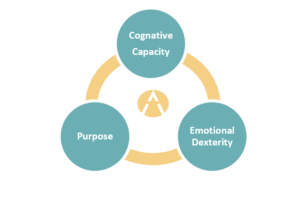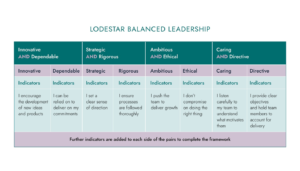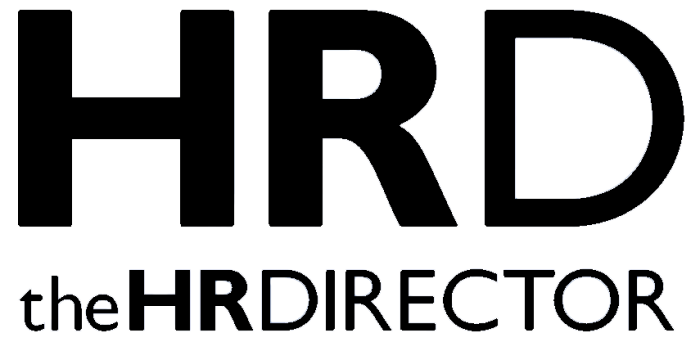We live in turbulent times, the world is unpredictable, divided and increasingly volatile. This backdrop creates a real challenge for leaders across the board in terms of how to respond, aggravated by, according to the Edelman Trust Barometer (2024) institutions and leaders experiencing historically low levels of trust.
Commercial organisations have a pivotal societal role, providing employment, community and purpose for billions globally and stoking the engine for innovation and economic growth. Over decades I have experienced and observed a myriad of organisational cultures as companies grapple with setting direction and persuading others to follow with enthusiasm, whilst delivering profits and shareholder return.
The engagement equation of Happy Staff = Happy customers = Commercial Success, as brilliantly laid out by Gurnek Bains in Meaning Inc, sustains, though I would suggest has become more complex in terms of understanding what constitutes a happy workforce. You only have to float a view about flexible working on social media to unleash passionate and conflicting perspectives.
How organisations are led really matters, leaders set the cultural tone and arguably their job has never been harder.
The rest is history

Before I share my perspective on what is needed now, I thought it was worth reflecting on some of the significant developments in leadership theory over the last 100 years or so, with the caveat that this is not an exhaustive list.
At the beginning of the 20th century, scientific management, dubbed Taylorism was very much in fashion and described humans as cogs in the machine. This was further systemised by Henry Ford in the mass production of the model T Ford.
Both were rooted in the principles of process management rather than leadership per se, which arguably began with Trait Theory originating in Carlyle’s Great Man Theory and expanded on by Stogdill. This theory advocated that certain individuals possess traits that make them natural leaders i.e. leaders are born not made.
Behavioural Leadership Theory then began to suggest that the way you behave, not simply your personality, determined your impact as a leader – alternative styles started to be codified e.g. Autocratic, Democratic, and Laissez-faire as identified by Lewin
Hersey and Blanchard developed the principle that there was not one best way to lead but that leaders needed to flex according to the situation and team capability coining the phrase Situational leadership
Somewhat turning things on their head Servant Leadership when Greenleaf theorised that the leader is in service of helping others to reach their full potential
James Downtown first coined the phrase Transformational Leadership which encouraged leaders to inspire teams into exceptional performance and innovation.
Recently leaders have been encouraged to adopt Authentic Leadership in response to a desire for transparency and engendering trust. This has at times been intertwined with a call for more Inclusive Leadership where the stated aspiration is for all to feel valued.
My intention is not to provide critique, though what stands out to me are the parallels between the evolution of leadership theory and societal shifts, each responding to each other.
So now what?
We are living with relentless uncertainty and a pace of change which requires a multi-faceted response. We need leaders who can navigate the complexity of the context and adapt their behaviour and actions accordingly.
This has been explored over time by some notable experts:
Charles Hampden Turner in Charting the Corporate Mind highlights the principle of strategic dilemmas which hold organisations back and advocates working on a collaborative continuum to resolve them.
Mihaly Csikszentmihaly’s seminal Flow speaks of achieving a balance between skill and challenge for optimal motivation and performance.
Smith, Lewis and Tushman in 2016 in HBR argue that leaders need to move from Either/Or to Both And leadership and nurture competing constituencies.
In Ten Years to Midnight, Blair Sheppard describes Paradoxes of Leadership suggesting that leaders need to “dance on both sides of a sword”.
These principles of dilemmas, balance and paradox resonated strongly, and I began to explore this through two different lenses. Firstly, to consider the leadership attributes necessary to succeed in this dynamic challenging context and secondly, how could these principles of paradox be bought to life in organisations,
Talent spotting

There remains non controversially, an assumption that leaders need to be intelligent, which can be demonstrated through academic achievement or the measurement of IQ. There is also widespread recognition that intelligence alone is not enough and that the ability to connect with and manage emotions has an important role to play as leaders need to work with and influence others.
Whilst these principles sustain, in their simplest form they don’t feel like quite enough anymore. Accepting that we need leaders who can “dance on both sides of a sword,” who can ride two horses simultaneously and to walk the leadership tightrope without falling off, I am advocating for an upgrade of the 1Q/EQ approach as shown below:

Cognitive Capacity here is defined as the ability to make meaning, navigate complexity, understand causality and hold multiple perspectives, and Emotional Dexterity as the ability to effectively recognise, understand and manage a wider range of emotions both within yourself and in others. Leaders with these capabilities are much more than smart and personable and catalysed by a sense of Purpose they can be the real game changers.
Understanding who in your organisation possess these attributes will enable you to identify those who have the potential to successfully navigate the demands of leadership in the modern world.
Vertical development tools such as the Leadership Development Profile (LDP) are a helpful way of identifying individual cognitive capacity. These tools explore perspective taking, meaning making, self-concept and complexity navigation far beyond standard IQ testing. Emotional Dexterity can be explored through a broad sweep of 5 factor personality tools such as the Hogan Suite or firo-b. The combination of these two approaches can build you a rich picture of your leadership potential. Identifying your high potentials is a critical strategic activity as is creating an organisational approach to leadership fit for the current context, which is the second lens I would like to share.
Powerful paradoxes in organisations
Whilst working on a leadership frame for an organisation it became clear that they were grappling with seemingly competing priorities. They had in the past been asking leaders to take a position that required them to choose skills in a binary way excluding some that in reality needed to be maintained alongside their seemingly opposing capabilities. For example, as leaders became more senior, they were asked to focus on the big picture and leave the detail to others, which was making some feel uncomfortable and potentially adding risk into the system. Our belief is that senior leaders need to be able to manage both, and flex between them as necessary.
This observation really made sense to our client and led us to develop the Lodestar Balanced Leadership model which incorporates the concepts of paradox and balance to help leaders navigate across the dilemmas they face on a day-to-day basis.
When presented with the framework a key realisation for leaders is this a not a shift from one leadership quality to the other – it is about embracing both and demonstrating indicators on both sides e.g. listening carefully to my team to understand their motivation and providing clear objectives and holding them to account for delivery.
Below is an illustrative generic example, showing four potential pairings of leadership dilemmas identified by an organisation, supported by indicators crafted to bring these to life.

Making it your own
Our experience tells us that a meaningful leadership framework must be rooted in the cultural of the organisation. We work closely with leaders and their teams to really get under the skin of the strategic dilemmas they face. We then build a unique pragmatic version of “what good looks like”; the pairings and the indicators are designed specifically for each organisation. The indicators are levelled to reflect the leadership structure of the organisation in question. This creates clarity about what is expected to progress and a sense of accountability for senior leaders. This enables management and leadership development needs as it identifies blind spots and capability gaps. We have seen organisations realise that their bias for a caring culture could benefit from balancing with more directive approaches and vice versa. This recognition leads to productive debate and supportive action.
Such a framework can provide the foundation for leadership development programmes, performance management, promotions and resourcing, creating a leadership culture to support leaders who are under pressure like never before.
Looking ahead
We hope for less turbulence in the future and to equip leaders and organisations with the skills and leadership strategies to be able to adapt and thrive. To take us back to the beginning, commercial organisations have a pivotal societal role, providing employment, community and purpose for billions globally as well as stoking the engine for innovation and economic growth. That has got to be worth reflecting on.
For further insights and updates, connect with the author, Sue Round on LinkedIn







